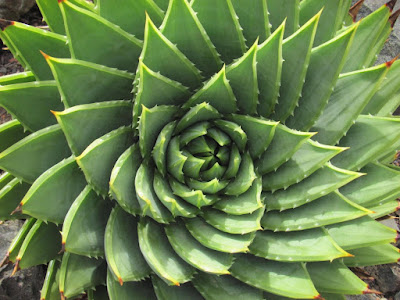
Placer County master gardeners present Zoom workshop Saturday

|
|
Succulents have their own special beauty. (Photo
by L. Meyerpeter, courtesy UCCE Placer County
master gardeners)
|
Succulents are still the hottest thing growing in the garden world. Any gardener who feels they are late to the party might want to join a free online class offered this Saturday, June 12, by the UCCE Placer County master gardeners.
The class starts at 10:30 a.m. and is divided into two parts:
1) Welcome to the Splendid World of Succulents.
2) How to Propagate Succulents.
The link to the class and passcode is at this page ; no registration is required.
There also are links to several handouts on the page -- valuable information especially if you come in late or have to miss the class entirely.
Check out the Placer County master gardeners' newsletter here on page 3 for more on propagating succulents.
The Placer County master gardeners have a wealth of gardening information on their website, http://pcmg.ucanr.org/
Scheduled at the end of the month: a free Zoom workshop on California native plants for habitat gardening, 10:30 a.m. Saturday, June 26.
-- Kathy Morrison
Comments
0 comments have been posted.Sacramento Digs Gardening to your inbox.
Sites We Like
Garden Checklist for week of April 21
This week there’s plenty to keep gardeners busy. With no rain in the immediate forecast, remember to irrigate any new transplants.
* Weed, weed, weed! Get them before they flower and go to seed.
* April is the last chance to plant citrus trees such as dwarf orange, lemon and kumquat. These trees also look good in landscaping and provide fresh fruit in winter.
* Smell orange blossoms? Feed citrus trees with a low dose of balanced fertilizer (such as 10-10-10) during bloom to help set fruit. Keep an eye out for ants.
* Apply slow-release fertilizer to the lawn.
* Thoroughly clean debris from the bottom of outdoor ponds or fountains.
* Spring brings a flush of rapid growth, and that means your garden is really hungry. Feed shrubs and trees with a slow-release fertilizer. Or mulch with a 1-inch layer of compost.
* Azaleas and camellias looking a little yellow? If leaves are turning yellow between the veins, give them a boost with chelated iron.
* Trim dead flowers but not leaves from spring-flowering bulbs such as daffodils and tulips. Those leaves gather energy to create next year's flowers. Also, give the bulbs a fertilizer boost after bloom.
* Pinch chrysanthemums back to 12 inches for fall flowers. Cut old stems to the ground.
* Mulch around plants to conserve moisture and control weeds.
* From seed, plant beans, beets, cantaloupes, carrots, corn, cucumbers, melons, radishes and squash.
* Plant onion sets.
* In the flower garden, plant seeds for asters, cosmos, celosia, marigolds, salvia, sunflowers and zinnias.
* Transplant petunias, zinnias, geraniums and other summer bloomers.
* Plant perennials and dahlia tubers for summer bloom.
* Mid to late April is about the last chance to plant summer bulbs, such as gladiolus and tuberous begonias.
* Transplant lettuce seedlings. Choose varieties that mature quickly such as loose leaf.